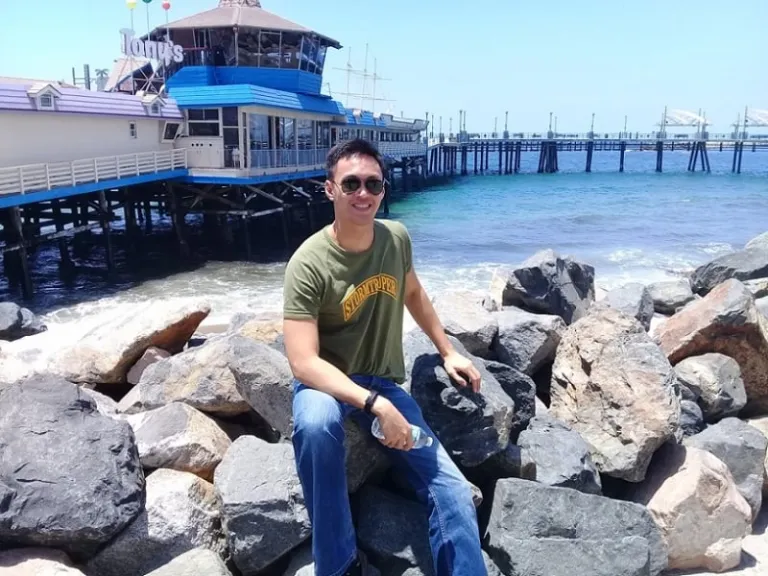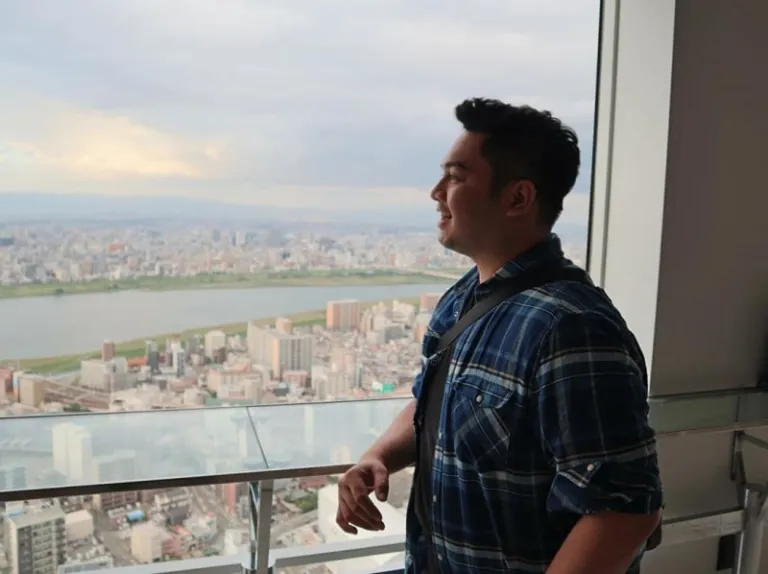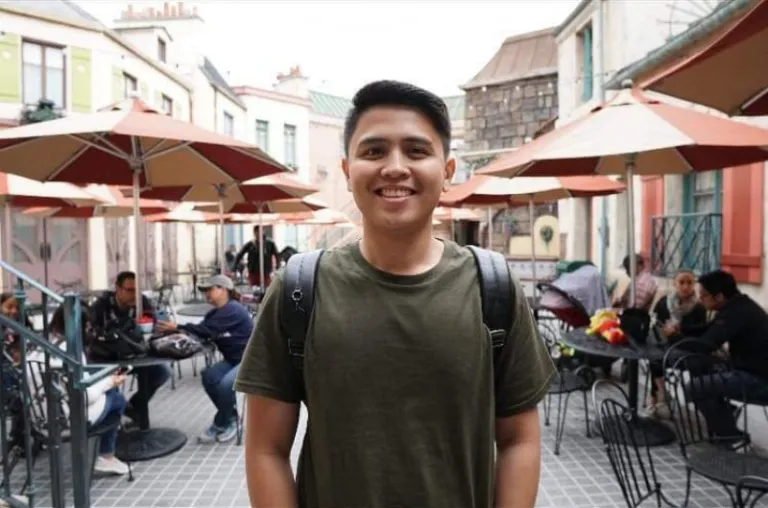When 11 days in Japan still aren’t enough!
Young Filipino Pilots Who Are True Work-Travel Goals

Work and travel for free — who wouldn’t say yes to that? While the rest of us spend our days hustling in cubicles as we wait for the next chance to hop on a plane, you have travel photographers, tour guides, cruise ship workers, and flight attendants faithfully living that very life we can only dream of. Then, there are airline pilots. We don’t see them all the time, but we do know that they’re paid well (better than most office employees), they get free flights for themselves and their families, and, you got it, they get to enjoy one of the coolest “office” views on the planet!
Nonetheless, manning an aircraft thousands of feet in the air while ensuring the safety of each individual on it is far from easy. Truth be told, the life of an airman or airwoman is one of countless and often unspeakable turbulences (pun intended) — from jetlag and sleepless nights to enduring bad weather and passengers. Fueled by my own curiosity, I’ve taken the time to talk to a few Filipino pilots to know more about their highly coveted (yet also undervalued) work-travel lifestyle. If you aspire to be one yourself, pay close attention.
Also read: Travelling for a Living: The Perks of Being a Flight Attendant
Robert Mendoza, 26

Pilot since: 2017
Aviation school: Philippine Airlines Aviation School
Favourite destination: Los Angeles
Currently based in: Manila
Why did you decide to become a pilot?
I decided to become a pilot because it was really my dream since I was a kid, as cliché as it may sound. It was not because of any travel perks or the prestige of the job.
How do you feel about getting to travel for a living or having travel perks?
It really is fulfilling to have your dream job and at the same time experiencing the perks that come with it, especially travelling. I get to go to places I haven’t even been to and it feels surreal to be able to see such places that I too once dreamed of visiting. To me, working as a pilot is the best way to see or experience the world.
What’s your daily/weekly life like in your job?
I’m out of the country for approximately 20 to 25 days in a month. What I do pre-flight includes preparing flight documents, checking the weather and alternate routes in case of an emergency, and checking the aeroplane externally. Basically, the work is more of ensuring the safety of the passengers. During a flight, there’s not much work since we’re cruising. My work is to monitor the system. Post-flight, my work is to fix everything at the flight deck as a courtesy for the next user.
Any struggles/challenges that you’ve personally encountered doing your job?
It’s hard for me to adjust to time differences, especially when the time for departure is late in the evening because that means that I have to work during the wee hours when my body is used to sleeping. Upon arriving at the designated country, it’s either I just go out first and follow their time instead, or go to sleep and take a rest so I can follow Philippine time. In such case, I won’t have to readjust when I get back home.
What would be your advice or tips to Filipino travellers who also aspire to be a pilot or pursue a career in aviation?
My advice to Filipino travellers who aspire to become a pilot or pursue a career in aviation is to be passionate about fulfilling their career. Also, make sure that they truly care and pay attention to every detail because it is not an easy job, it is a big responsibility, you’re carrying lives.
Paulsen Ong, 27

Pilot since: 2009
Aviation school: Airlink International Aviation College
Currently based in: Manila
Why did you decide to become a pilot?
Flying is really my passion. I feel so overwhelmed [in a good way] whenever I get to ride an aeroplane, or even when I see pilots walking at the airport. Travel perks and all the benefits I’m getting are just a bonus.
How do you feel about getting to travel for a living or having travel perks?
I get to bring my whole family to wherever they want at least once a year, on my vacation leaves to be exact. Since they also have the travel benefit, I think they enjoy more of their travel benefits compared to me since I am always busy at work.
What’s your daily/weekly life like in your job?
We usually fly out of Cebu, Clark and Davao which means I am often out of Manila. We stay at the hotel five to six days a week and then get one to two days off in Manila. I normally check the weather, the flight plans and all the required documents prior to our flight. After a flight, I usually go out with my colleagues to destress myself from work.
Any struggles/challenges that you’ve personally encountered doing your job?
Maybe when I am flying with much older first officers, since they are more experienced than I am, I listen and consider their thoughts and ideas as part of CRM (Crew Resource Management). But as a captain, my decisions should be firm, of course without compromising the safety of the aircraft and everyone on board.
What would be your advice or tips to Filipino travellers who also aspire to be a pilot or pursue a career in aviation?
I know some people who let go of their flying dreams because of their age. I may have started early, but it doesn’t mean age can stop anyone from dreaming and reaching their goals. At the end of the day, what’s more important is that we try and never give up.
Chezka Gonzales-Garrido (a.k.a. Filipina Pilot Chezka), 30

Pilot since: 2014
Aviation school: Fliteline Aviation, Philippine Academy for Aviation Training
Favourite destination: South Korea
Currently based in: Cebu
Why did you decide to become a pilot?
It’s a combination of a dream to see the world and a semi-fulfilment of a dream to be an astronaut. When I was young, I wanted to be an astronaut and since I think it is far from reality, I chose to become a pilot which is nearer to that dream.
How do you feel about getting to travel for a living or having travel perks?
Since a pilot is someone bringing the aeroplane from one destination to another, my desire to see the world, hopping from one place to another, became a fulfilment of my dream. What makes it exciting are the different places you go to, meeting different kinds of people along the way and getting additional flight hours that adds to my experience.
What’s your daily/weekly life like in your job?
I fly three to five times a week, domestic and international flights, depending on the schedule. Before the flight, we check in, print all the needed flight plans and document check. When inside the aircraft, we follow checklists on pre-flight, in-flight and post-flight. We make sure all activities concerning the safety of those on board are fully complied with. Paperwork is part of the job too.
Any struggles/challenges that you’ve personally encountered doing your job?
The common question I am often asked is “Can women pilots fly an aeroplane?”. To this, my reply is “Men and women pilots study the same lessons, undergo the same training, do the same routines, so I just try my very best to fly the aeroplane as smoothly and as safely as I can”. After all, I consider being a pilot not as a race but a commitment to our passengers to safely arrive at their destinations.
What would be your advice or tips to Filipino travellers who also aspire to be a pilot or pursue a career in aviation?
One should love and have a passion for this profession and should not look into the aspect of higher pay and free travels only because being a pilot is much more than these. It entails a lot of responsibilities, challenges, sacrifices. [There are also] constant trainings, check rides, unstable flight schedules, being away from your family most of the time, and a lot more. Those aspiring to be a pilot should persevere, be brave, prayerful, and should have the drive to become one.
Enrique Morales, 29

Pilot since: 2014
Aviation school: Leading Edge Aviation Academy Inc.
Favourite destinations: Bangkok, Tokyo
Currently based in: Manila
Why did you decide to become a pilot?
I really like aeroplanes. At a young age, I was exposed to aviation because my dad would build aeroplane model kits, take me to airshows, and also fly on aeroplanes with me. I eventually had the chance to fly one myself. Learning to fly an aeroplane further strengthened my passion. From a hobby, flying became my profession.
How do you feel about getting to travel for a living or having travel perks?
Aside from sightseeing during our layovers, we are given travel benefits by the airline. This means we can get seats to the destinations for a discount. If the intended flight is fully booked, we may take the next flight because our crew tickets are flexible.
What’s your daily/weekly life like in your job?
To fly a commercial plane takes teamwork. Pilots, flight attendants, air traffic controllers, mechanics, and ground crew work together to fly a plane. Pilots show up four hours before the flight at the dispatch office to work on the needed documents. When we get to the aeroplane, we perform the external 360° inspection and set up the aircraft for flight. During the flight, we coordinate with air traffic control, eat some snacks, fly the plane, and enjoy the view. Post-flight, we do another round of paperwork, and then we have our rest.
Any struggles/challenges that you’ve personally encountered doing your job?
A struggle I encounter the most is jet lag and operating red-eye flights. Our body clocks are often offset to another time zone. For example, it may be 2am locally, but your body feels as if it’s 5pm. One way I was advised to overcome this is to sleep whenever we feel the need at the layover station. But leaving from Manila, we have to schedule our sleep in order to compensate for our upcoming flights. During the flight itself, I sometimes get sleepy.
What would be your advice or tips to Filipino travellers who also aspire to be a pilot or pursue a career in aviation?
There is no requirement to take aviation-related college courses. I have known many airline pilots who graduated from nursing, psychology, engineering, and others. This career takes constant studying and continuous learning. You will be responsible for your passengers and your crew. They depend on you knowing your craft well. Also, it takes more than one pilot to fly an airliner. Be a team player, be nice to everybody. Make friends!
Mann Ed Demalata, 31

Pilot since: 2009
Aviation school: Masters Flying School, Alpha Aviation Group
Favourite destination: Japan
Currently based in: Manila
Why did you decide to become a pilot?
I’ve always wanted to be a pilot ever since I was a small kid. It was sort of like a childhood dream. But growing up, I thought that it would be impossible because I knew that it cost a lot. But when I reopened up the idea to my parents when I was in college, they were very supportive.
How do you feel about getting to travel for a living or having travel perks?
My main reason why I wanted to be a pilot is because my family and I love to travel! And being affiliated with an airline entitles us to travel privileges to all local and international destinations. Time and schedule permitting, we try to travel and visit different countries every couple of months. Just this 2019, we’ve been to more than six countries and each of our travels has always been a lot of fun and very memorable. Experiencing different cultures, trying their local delicacies, and learning their language is a truly fun and memorable experience. Truly, travelling is the only thing you pay for that makes you rich.
What’s your daily/weekly life like in your job?
Every end of the month, our roster comes out online for the following month. Usually, we would fly an average of 70 to 80 hours a month depending on the schedule. A typical day at work would be arriving at the airport one and a half hours before departure flight so that my crew and I would have sufficient time to perform pre-flight crew briefing, and prepare the aircraft for passenger boarding and departure. Upon arriving at the destination, deplaning happens. Once the aircraft is cleaned up by the ground personnel, boarding takes place once again. In between flights, where we know there’s good local food or delicacy available, we buy some to eat in flight or bring home to our families.
Any struggles/challenges that you’ve personally encountered doing your job?
We carry lives onboard each flight that depend on us to bring them safely to their destinations. With that, never-ending training and learning occur. We practise different emergency procedures regularly every six months in simulators. So just in case an unlikely event would happen in real life, we’d be fully prepared.
What would be your advice or tips to Filipino travellers who also aspire to be a pilot or pursue a career in aviation?
A lot of kids would ask me how much pilots earn. I’d tell them, but I would also tell them that money alone shouldn’t be their primary motivation. Because there are lots of other ways to make good money. Flying is a passion, You won’t always get paid a lot, it depends on your company. But you really have to love doing it. With patience, hard work, determination, and lots of prayers, you can always achieve to be a pilot, or not just be a pilot but anything you want to pursue in life in general.
Alessandra Villacorte, 28

Pilot since: 2014
Aviation school: WCC Aviation, Philippine Academy for Aviation Training
Favourite destination: South Korea
Currently based in: Manila
Why did you decide to become a pilot?
Even when I was younger, being a pilot crossed my mind several times but I chose not to entertain those thoughts. I have always thought that “women who pursued flying” was a shot in the dark. I thought it involved a lot of arithmetic, how difficult it probably was because I rarely saw women pilots, and how preposterous it was for me to pursue it. I was my own worst enemy. Eventually, I took my uncle’s advice and I have never looked back since. The day I decided to change careers was the day that changed my life for the better.
How do you feel about getting to travel for a living or having travel perks?
We are given travel benefits like free and discounted tickets and these benefits extend to our immediate family members. We get discounts when we buy from most establishments in the airport, here and abroad. Aside from these, it’s the view from the cockpit that still astonishes me every day. I will never get tired of seeing it.
What’s your daily/weekly life like in your job?
We are given flights three or four times a week, depending on the schedule. Also, our days off vary. Before a flight, we check in into the office an hour and a half before the departure time to check all the necessary flight plans, fuel requirements, weather at our departure point and destination. We also do our briefing together with our flight crew (this includes the flight attendants and mechanic, if any). During the flight, as a first officer (co-pilot), my job is to provide assistance to the captain (the pilot-in-command/PIC). I assume the role of the PIC when I am delegated to do so by the captain or if ever the captain becomes incapacitated.
Any struggles/challenges that you’ve personally encountered doing your job?
I think the biggest challenge as a woman in aviation is to prove to myself that I can do what all the other male pilots can do but better. I continually study to improve my knowledge and skills in flying. I make sure that no one would be able to say that I passed my biannual exams just because I am treated differently because of my gender, instead, I passed because I know what I’m doing and I have the knowledge to back it up.
What would be your advice or tips to Filipino travellers who also aspire to be a pilot or pursue a career in aviation?
Go for it. If there’s a slightest doubt in your mind, try to overcome it. As long as you know that it’s your passion and it’s something you can’t imagine yourself not doing, give it your all. Don’t rush and don’t compare yourself to others and when you are finally able to achieve what you intend to do, always remember to keep your feet on the ground. Stay humble.
Ada Batobato, 27

Pilot since: 2018
Aviation school: Omni Aviation
Favourite destinations: Cebu, Boracay
Currently based in: Manila
Why did you decide to become a pilot?
I became a pilot for so many reasons but the main reason is self-fulfilment. I knew I wanted bigger things in life. I wanted to get out of my comfort zone and take a leap of faith to achieve what others cannot. I knew that I deserve more out of this life. As they say, finding your purpose is one of the best feelings in life and I found this in flying. This might sound cliche but flying is my passion. And I cannot imagine doing something else in life but to fly aeroplanes all my life.
How do you feel about getting to travel for a living or having travel perks?
Of course, travel is another reason why I became a pilot. I get to have travel perks and get the chance to see many places I have not seen in my life. But for a person like me, sometimes the journey is as important as the destination.
What’s your daily/weekly life like in your job?
I normally fly three to four times a week and because of that, we achieve work-life balance. Before a flight, I get enough rest. Sometimes I may be on duty for 12 hours for an eight-hour flight. Therefore, after most of my flights, I just rest and go to sleep. Though some flights may be tiring, the company ensures we always get enough rest for the next flight of the week. On days off, we get to enjoy other things. We get to have hobbies, play sports, hang out with friends and families, and so much more.
Any struggles/challenges that you’ve personally encountered doing your job?
Number one is getting yourself into flying. Flying costs a fortune. My flying school expenses cost a total of ₱4 million. My parents had to work extra hard to get me into flying. Number two is landing a job. Finishing flying school is not enough. It’s not easy getting a job, especially when you don’t have flying experience. Most airlines would not even entertain you if you’re fresh off from flying school. But aviation might somewhat be unpredictable. There are times when pilot shortages are real and airlines would hire you with your minimal experience. Number three is company training. You have to learn SOP’s and adjust to their environment. Training for the airlines is not like any other training. This would test how far you can really go and how much you can endure just to get that airline job.
Number four is job security. There are many licenses and certifications you need to get on a yearly or semi-annual basis. Everything must be current and within standards for you to keep your job and that includes keeping yourself healthy and in good shape. Number five is the constant changes in the industry. You need to adapt to the changes that happen. What you know yesterday might not be the case for today and what you know today might not be the case for tomorrow. You need to keep yourself updated and you need to have a mindset where learning happens on a daily basis.
What would be your advice or tips to Filipino travellers who also aspire to be a pilot or pursue a career in aviation?
For aspiring pilots, my advice is to keep your dreams alive. Sabi nga nila “If there’s a will, there’s a way” at sabi rin nila “Kung mahal mo, ipaglalaban mo”. Dreaming is easy but chasing it is a whole different story. Chasing your dreams is part of the test of whether or not you are worthy of that dream. Good things in life don’t come easy. You have to claim it, fight for it and earn it.
Also read: Top 10 Work and Leisure Destinations for Filipinos
The prestige and travel perks aside, airline pilots have every right to be called the heroes of aviation today, and these answers prove it. Yes, they get to travel for a living and enjoy compensation packages not all of us get to enjoy in this lifetime. If it weren’t for these Filipino pilots, many of us wouldn’t even have ticked a single country off our bucket list — we owe our international travel credentials to them! But most importantly, we owe our safety while flying to their hard work, attention to detail, humility, and ability to stay calm even with the knowledge of having a whole aircraft of passengers and crew depending on them. And that, my friends, is admirable.
The quotes above have been edited for grammar, clarity and flow.
Published at
About Author
Joser Ferreras
Subscribe our Newsletter
Get our weekly tips and travel news!
Recommended Articles
11 Days of All Things Weird & Wonderful in Japan I Tried to Limit My 3-Day Cebu Trip Budget But Failed Miserably Have you ever tried exceeding beyond your travel budget?
How I Travelled 30 Days to 5 Southeast Asian Countries Under ₱50k Budget Ready to take your Southeast Asian trip to a new level? How about travelling for a month through five countries?
How We Spent 4 Days in Ho Chi Minh, Vietnam with ₱4k Pocket Money Inclusive of food, accommodation AND tours!
4 Days in Hong Kong: A DIY Itinerary Planning a trip to Hong Kong could be a tad overwhelming. Let this 4-day itinerary help you out!
Latest Articles
6 Filipino Foods to Eat During New Year's Eve for Better Luck and Wealth in 2026 Lucky Filipino foods you need for a prosperous Year of the Fire Horse!
FREE NYE 2026 Countdown & Firework Shows in the Philippines Don't waste ₱17k on hotel tickets! Catch SB19, Bamboo, and Ely Buendia for FREE.
New US Biometric Rule Filipino Travellers Must Know Mandatory border photo checks
Free MRT 3 Rides on Rizal Day 2025 Four hours of free rides
SM North-Trinoma Walkway Soon to Be Built, Says DOTr Safer walks ahead!

